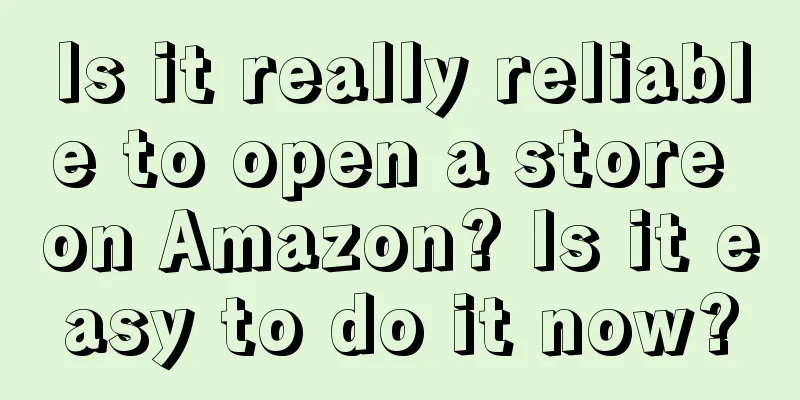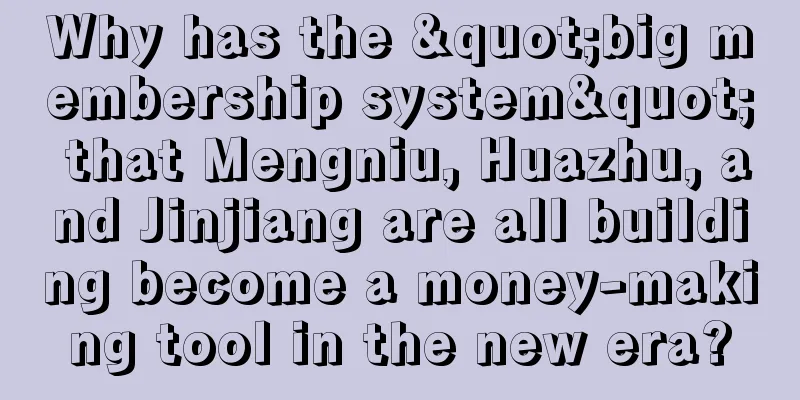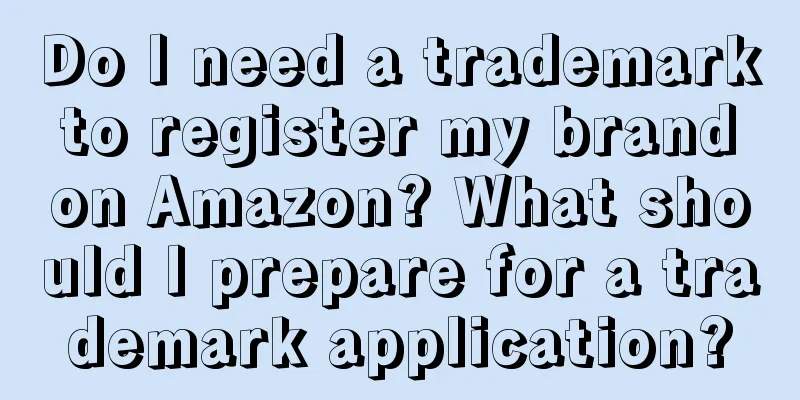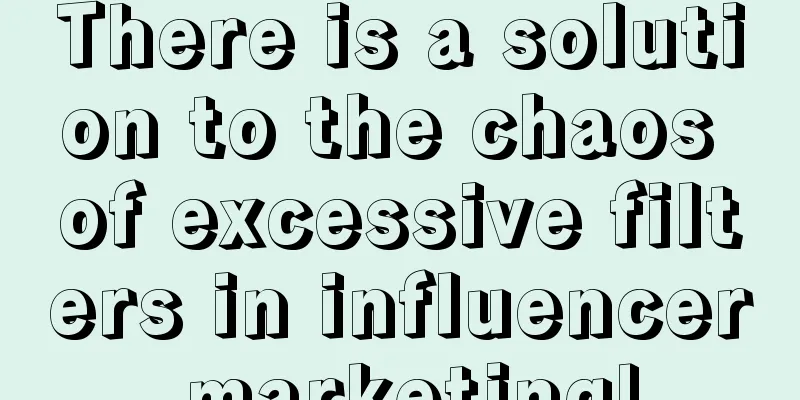High-end store brands seek change

When I was shopping with a friend recently, he said:
However, once I entered the mall, I found that some products were very affordable. For example, a short-sleeved shirt only cost about 99 yuan, which was acceptable to me, so I regained some confidence. He discussed this with me:
I think this problem not only troubles high-end store brands, but also becomes a difficult problem that local domestic store brands need to think about and solve seriously when building. The essence behind this is actually the understanding of "high-end" . 1. What is high-end?What are we talking about when we talk about “high-end”? If you go to some science and technology expositions, you will probably feel that those things that use technological innovation, intelligence advancement, and encourage you to bravely explore and surpass yourself seem to have a high-end feel. Or, you can set a very high price for the product and sell it to the rich. However, the rich are not stupid, and are especially smart; how could they not know what to buy? Therefore, high-end is like a big box, which includes multiple dimensions such as products, services, prices, experience, etc., and is ultimately presented to us through images. If you force a "high-end" label on your brand, people may doubt whether you have confidence in yourself. If you don't even have confidence in yourself, you can't lead others to become better, or even create a better social market economy. Therefore, I think there are three points in the high end: 1. De-premiumizationReal high-end brands never deliberately promote themselves as high-end because they don’t need to brag about how different they are. Instead, they let their products speak for themselves. Once consumers use them, they will know how high their level is. If you look at those advertisements that insist on putting the word "high-end", most of them are a bit confusing. Have you ever seen brands like LV, Hermes, Tesla, Duanmu Liangjin, and Rolls-Royce bragging about themselves? Casually attaching the "high-end" label may be quite effective for consumers who are not very familiar with the category, or for consumers in places where market competition is not fierce. For experienced consumers, or those in first- and second-tier cities who frequently surf the Internet, this practice of casually labeling products as "high-end" may backfire and leave them with a negative impression. 2. Customer decidesThe high-end of a brand is not determined by the company itself, but by the users. Whether a brand can become high-end depends on whether there are high-end users willing to use its products. Only in this way can its brand become high-end. A true high-end brand is created by you and your users. A brand is not your personal property, but a treasure scattered in the hearts of every user. Think about what high-end brands are in your mind? How do they promote themselves? Do the users of these brands have something in common with you? Or are their users the kind of people you want to be? For you, these brands may be calling you to pursue your dreams and achieve your life goals. I remember a survey on the consumer psychology of Chanel, a world-renowned luxury brand. The results showed that many girls buy Chanel for many reasons: A symbol of social status, a guarantee of quality, a self-reward, fashion and beauty, psychological satisfaction, and even as an investment. They buy Chanel not just because of the name, but because buying and using Chanel products can bring them satisfaction and happiness. So, what I want to tell you is that the brand does not belong to the company, but to the consumers. 3. Expensive problemGong Yanqi, the founder of Jinba Menswear, once asked a question: "What is something that you think is particularly important and you must find a way to do it well?" Ask yourself this question now. When Mr. Gong was making products, he once said that it is the same in our field. Jinba Men's Wear has defined the Chinese jacket. One of the important user groups is the entrepreneurial and wealth-creating group, who are entrepreneurs after the reform and opening up, and are small and medium-sized business owners. They are very busy. One moment they finish discussing business, signing a contract, or handling documents, and the next they may have to go to their office to work or even go to the factory to pick up goods. The question is, what kind of clothes does he need so that he can be appropriate when talking and comfortable and convenient when working? This is an important question. In order to solve it, many people are willing to pay a high price to have a piece of clothing custom-made. But is it really that troublesome to make a jacket that looks ordinary? Mr. Gong mentioned that if you want to do well in men's clothing, quality of style and fabric are very important. If you want people to wear the collar, shoulders and chest size appropriately and with confidence, it is not something that can be achieved on a conventional assembly line. The reason why we have come to where we are today step by step is because we do better than others in these details. If you understand these, you will also understand what "high-end" means in the eyes of different consumer groups. You have to find the needs before you can define it. 2. Brands must have a cultural matrixYou may say that the demand is brought by the group, and I just need to define gender, age group, and occupation. But that’s not the case. If you want to create a localized domestic brand, you cannot just go with the flow like opening a traditional store. You must have a cultural matrix. What is the cultural matrix? It’s those things that never stop, that cycle, that brand-forming things. For example: you have to eat every day, drink water every day, and go to the toilet every day. These eternal rules are not affected by human consciousness. These unconscious actions are characteristics of the cultural matrix. Around the cultural matrix, groups are divided into two types: 1. ESG peopleESG refers to consumers who care about the environment, society and corporate governance. They not only look at a company's pockets, but also its performance in terms of the environment, society and corporate governance. "ESG consumers" not only look at the product itself, but also look at how the company behind the product does business and what its values are. What impact will this type of consumer have on our society? And how should we create social value for them? They have one thing in common, namely: when buying things, they are largely influenced by values; they will consider whether the company behind the brand supports sustainable development, whether it does something about environmental protection, whether it cares about the earth, whether it can achieve a circular economy, and so on. Therefore, if more and more consumers become ESG people, then the development and advantages of this group will drive brands to better resonate with consumers' values. 2. New consumer powerWhether in China or abroad, people are paying more and more attention to the "post-95s" and "post-00s" born between 1995 and 2009. In China, we define this group of people as the new consumer force. How many of them are there? Based on demographics, there are about 260 million of them. How they think about brands, what categories they choose, and what they expect from brands are very different from previous consumers. They are able to collect and compare more information, are more willing to express themselves, and prefer to express themselves and define their lifestyle by using specific brands. They have more national pride and self-confidence than their parents, and their aesthetics are more advanced and international than those of the "post-70s" and "post-80s". These characteristics are reflected in their interaction with brands and the way they choose brands, which constitutes a new consumer force. So, whether we are talking about high-end brands, mass brands, local brands or national brands, we cannot ignore these two groups. They are important consumers and main users for many types of products and brands. With the user group, take a deeper look at what customers expect from high-end brands? 3. How to create a “high-end brand”1. AttitudeESG people and new consumer forces do not have as deep an experience of high-end products as the generation born in the 1980s and early 1990s. They pay more attention to brand responsibility and attitude. The era of only caring about making money and not saying anything is over. Our consumers, especially the new generation of consumers, want brands to have their own views on society and life. I hope that brands can actively advocate some good social values and make society a better place. When facing various challenges and difficulties, I hope that brands can stand up and show sincerity, courage and wisdom; these are rare qualities in this ever-changing era. Therefore, if we want to make our brand a high-end brand, a brand that everyone is willing to follow, we must have our own attitude and sense of responsibility. 2. BuildLEGO is a very famous building block brand that is loved by both adults and children. Although it mainly produces toys, it actually builds a global community of toy lovers. LEGO fans love to share their creations, learn from each other, and even compete, forming a lively community. The company also often interacts with members of this community, such as holding design competitions or turning fans' designs into new products. By doing so, LEGO has successfully made users the disseminators and co-creators of the brand, while also enhancing users’ loyalty and sense of belonging to the brand. This is the power of a community that is linked by interests. We buy products not only because we need them, but also because we hope that they can make our lives more colorful, help us discover and cultivate new interests, and add new meaning and ways to our lives. There are other similar brands, such as Harley-Davidson, Lululemon, and Peloton. They all have common features: Build strong community relationships through a certain product or product-related content. In these communities, users can not only share their achievements and encourage each other, but also become an important force in promoting brand development. You might as well think about this: Why is it so difficult for mainstream high-end brands to survive? These brands are not considered high-end, but in fact they are very popular in the market and have high stock prices. Why is this? Unilever, The Body Shop, Nike and others are all very famous brands. They not only sell products, but also tell touching stories to shape their brand image. Moreover, they show care for their customers during difficult times and take responsibility for making the world a better place. These are the ESG people, from those who care about the environment, society and corporate governance to those who value brand value. They will resonate with the brand because of these brand behaviors. 3. TrustWhat is trust? I don't fully understand whether the product is good or bad, but I am willing to trust you. Many high-end brands are priced very low, but to buy these products, consumers need a lot of knowledge and the decision-making costs are huge. At this time, a certain consumption gap will arise. So, where will the trust in the future come from? In one word: narrative. When it comes to building a brand, we immediately think of advertising and increasing brand awareness. Advertising and brand awareness are still important, but we must understand that the marginal benefits of brand awareness are decreasing. In addition to awareness, we need to move from communication to narrative, to content, to operations; we need to transform the brand from a status that is admired by others to an object that can be approached like a friend. We can communicate like friends, innovate together, and inspire each other. In the past, the content we forcefully disseminated had no value to the customers themselves. Now we need to shift to storytelling, seeking emotional connections with customers, finding resonance, and inspiring them through storytelling. Such a story is not a "pie in the sky" in the traditional sense, but incorporates ESG, which can bring valuable things to users and help you better understand the product category, yourself, and the brand. In other words, we have transformed the communication that had no value to consumers in the past into storytelling that is valuable to consumers and makes consumers better off. In other words, high-end brands need to evolve from product brands to scenario-based brands, then focus on narratives, and evolve from purchasing scenarios to "purchasing solutions." Only in this way can cold products be integrated into life with warmth. Therefore, washing machines have become the center of household cleaning; TVs have become the entertainment center of the family living room and a part of the home, and mobile phones have become an important means of connecting people and empowering them. These are what we pursue, the local high-end brand image. 4. What should we pay attention to when building a brand?So, how should high-end store brands lower their profile, or in other words, what should local domestic store brands pay attention to when building? 1. Don’t pursue large areasIn early June, Estee Lauder's niche perfume brand "LE LABO" opened a store in an independent building in Shanghai Xintiandi. This is the second LE LABO brand home in the world, and a lot of thought was put into it from site selection to design to final implementation. Why open a store in a place like this with Shanghai characteristics instead of in a high-end shopping mall like other high-end brands? In fact, doing so will be more in line with consumer needs. Large shopping malls give people a less and less intimate feeling. On the contrary, the culture and temperament of the LE LABO brand are like a steady force, which solves the communication barriers between the brand and consumers and allows consumers to feel the unique atmosphere of the brand. More importantly, the store’s Shikumen architectural style and the traces of time left on the walls match the styles of LE LABO’s stores in Brooklyn, New York, Hollywood, Los Angeles, Milan and Berlin, together constituting LE LABO’s unique aesthetics. This aesthetic is also a story created by the brand, the community and consumers. I am not emphasizing how brilliant LE LABO is, but you can see that many foreign brands have gradually moved away from large shopping malls and placed themselves in some grid-style shopping spaces and unknown alleys. Compared with mainstream commercial brands, these brands pay more attention to the lifestyle that people care about rather than just selling products. 2. Have fun with usersWith annual sales of over 100 million yuan, a repurchase rate of over 60%, and almost every new model sold out, "Guanxia" is a brand that I believe does a good job in user narrative storytelling operations. The essential attribute of fragrance products belongs to "non-functional category". Therefore, the brand content expression relies more on the understanding of aesthetics, creativity, and cultural depth. Combining the output of multiple platforms, I can summarize several characteristics: telling a good story, finding a good scene, and using cultural derivatives to enhance the brand quality. So, what to do? for example: The column "I Live Alone" starts from the "alone scene" and through interviews with different users, explores their (brand KOLs) stories and attitudes about living "alone". The word "alone" here means "both physically and psychologically. Some of them live alone, while others can happily find the most comfortable rhythm and space for themselves with their partners and family." They also use this to convey the heartwarming stories between "Xiang" and users, describing how "we" live seriously, impressing and attracting more like-minded "I". Behind each "I" is actually "we" with similar experiences or attitudes, thus triggering emotional resonance. 3. Emphasis on ESG constructionMany companies use ESG construction to show off, or even cover it up by helping farmers or engaging in public welfare activities. This is a misunderstanding. We have seen too many scandals about certain brands (companies), and even secondary out-of-control incidents caused by social events; then, many people will complain, why is the world so unfair, why people who seem easy-going on the surface can be so vicious behind the scenes and be able to say such ugly words? Just like a few days ago, a student in Wuhan was crushed to death in school. The mother was interviewed by a video and suffered online violence. Some people even left comments such as "It's great to be young and beautiful, I came to see her figure." Such strange words. Behind these problems, from a macro perspective, they are social events, but from a micro perspective, they are due to insufficient ESG construction by companies. Some companies may be less involved in the environmental aspect, but there is always something they can do in terms of social and governance. To implement them at a specific level is to do human work and reshape values. We may not see obvious benefits in the short term, but in the long run, a single spark can start a prairie fire. The joint advancement of one brand after another will have positive significance for the entire society. Using stores to convey brand culture has gradually become a fiercely competitive red ocean track. I believe that these three elements are the core that supports the local store brands in the new era. 5. Final ThoughtsYou can view me as an ordinary brand, however, deep inside me lies a unique strength and innovative thinking. As long as you are willing to approach me and interact with me, you will gradually appreciate these intrinsic values. Over time, I hope you will gradually develop trust and even respect for me. The reason why I exist is not only because I am a brand, but also because I can bring you unique experience and value. This may be the ultimate pursuit and destination of all local high-end store brands. Author: Wang Zhiyuan, public account: Wang Zhiyuan |
<<: The essence of private domain is full of fraud and misunderstanding
>>: With 2.69 million people online at the same time, why did this live broadcast become so popular?
Recommend
In 2025, will the short drama live streaming anchor have a happy ending?
As the short drama market continues to be hot in 2...
Can Wish use Taobao as the source of goods? How to solve the supply problem?
Wish cross-border e-commerce is still very popular...
Which Google overseas promotion company is the best? What does Google overseas promotion mean?
Domestic merchants doing cross-border e-commerce b...
What are the three types of Amazon sellers?
In addition to different sales models, Amazon also...
A single live broadcast room invested 300,000 yuan? Group broadcast reached a new height...
With the continuous development of the entertainme...
How to view and deal with slow-selling products on Amazon?
After we opened a store on Amazon, we need to cons...
What can be done before a cross-border e-commerce promotion?
When we run a store, we often feel that the popula...
Inconspicuous, but very profitable! Three major operating strategies of Xiaohongshu
Introduction: This article focuses on the operatio...
The live broadcast of card opening that has made countless netizens addicted, with an investment of several thousand, can you earn 20,000 yuan a month?
A new form of live streaming, which induces consum...
What is Shopify's Japanese payment method? What payment methods are supported?
Shopify is a very unique independent website platf...
How I increased my company's followers by 300,000 through an event
Special Forces-style tourism - when the whole netw...
Is Amazon e-commerce considered cross-border e-commerce? How to determine?
Many of you must have heard of Amazon, because now...
Are there any advantages to Amazon local stores? What are the advantages?
In Amazon, when people open stores, they are gener...
Bullet screen game live streaming has become popular on Douyin, with some anchors earning as much in one month as they did in the past year...
How does the live broadcast of interactive games w...
Is insurance self-media going to be gone?
The author of this article analyzes what the "...









